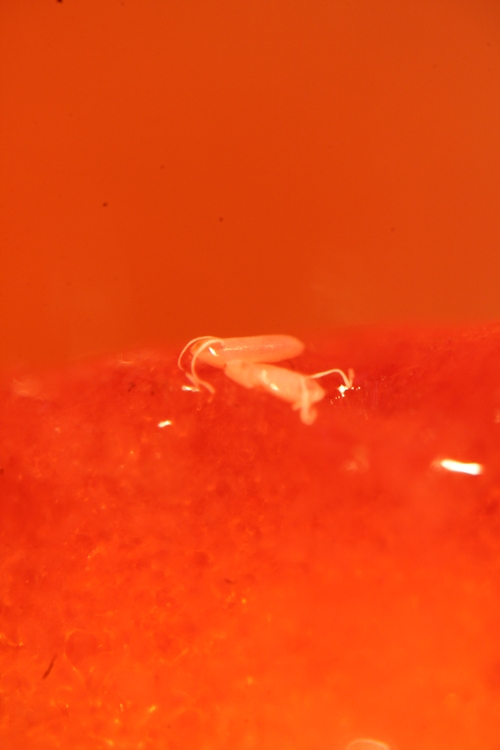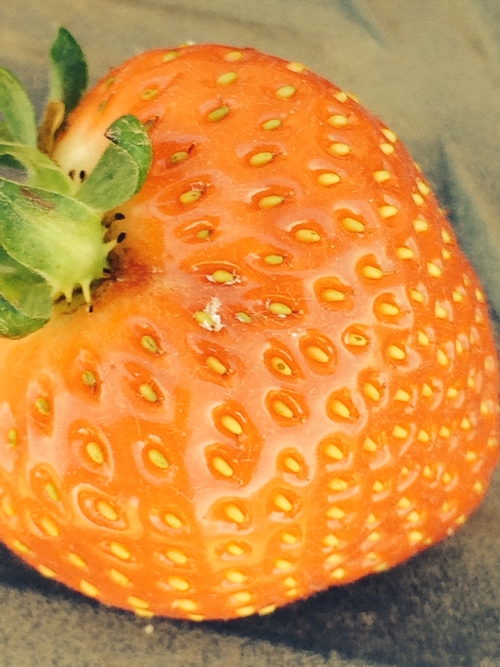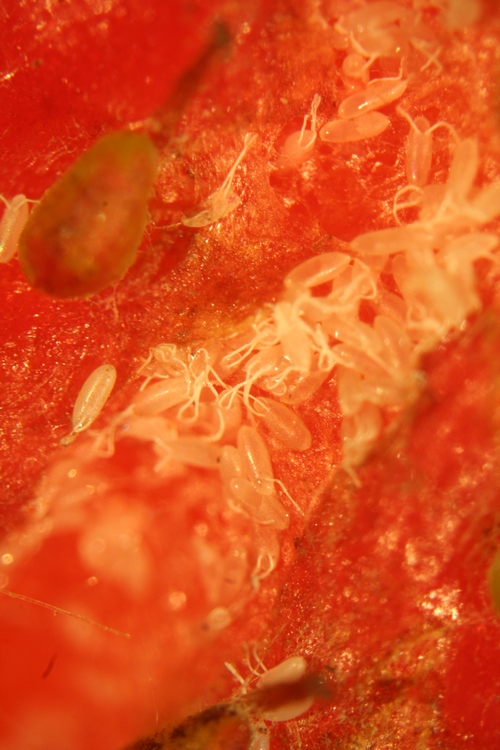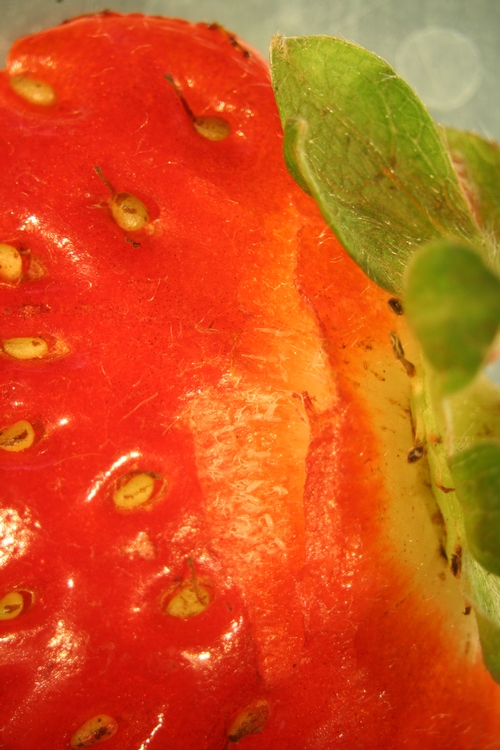Posts Tagged: vinegar flies
A Few Observations on Vinegar Flies in Strawberries
As any grower knows, vinegar flies, Drosophila spp., have been a major deal in strawberries the last few years. It seems the slightest delay in picking (especially in the fall) is met with an onslaught of vinegar flies followed by a huge loss of fruit.
I have the good fortune to be funded this year by the North American Strawberry Growers Association (NASGA) on a study looking at predaceous nematodes as a way of controlling vinegar flies. More on that at a later date, but having my research assistant Monise Sheehan and I spend some time looking closely at vinegar flies in strawberry brings up some observations that I would like to share here.
First of all, regular vinegar flies, as opposed to the spotted wing drosophila, Drosophila suzukii, do not oviposit in fruit, rather they oviposit on the surface. I am going to underline that this doesn't at all mean they won't damage the fruit, since it is only 24 hours each one spends in the egg stage before becoming an active larva fully capable of penetrating into the fruit.
It is interesting to see where the egg laying is taking place. It's uncommon to see eggs just deposited on a healthy fruit (Photo 2); it is rather in wounds (Photo 3) and cracks (Photo 4), bruises and any other kind of damage which softens and compromises the integrity of the fruit where the bulk of the eggs are found.
I think the take home message for strawberry growers and supporting professionals is to know how very fast the life cycle of vinegar flies goes and the big role that damage, be it wounds, cracking, bruising or general softness has in promoting their development.

Photo 1: Vinegar fly eggs under the microscope. Long fibers are respiratory tubes.

Photo 2: Mass of vinegar fly eggs on an ostensibly healthy fruit. The immaturity of this fruit is notable.

Photo 3: Mass of vinegar fly eggs in fruit wound, rendering it totally unmarketable.

Photo 4: Vinegar fly eggs nicely lined up in crack under calyx. This fruit is lost.

